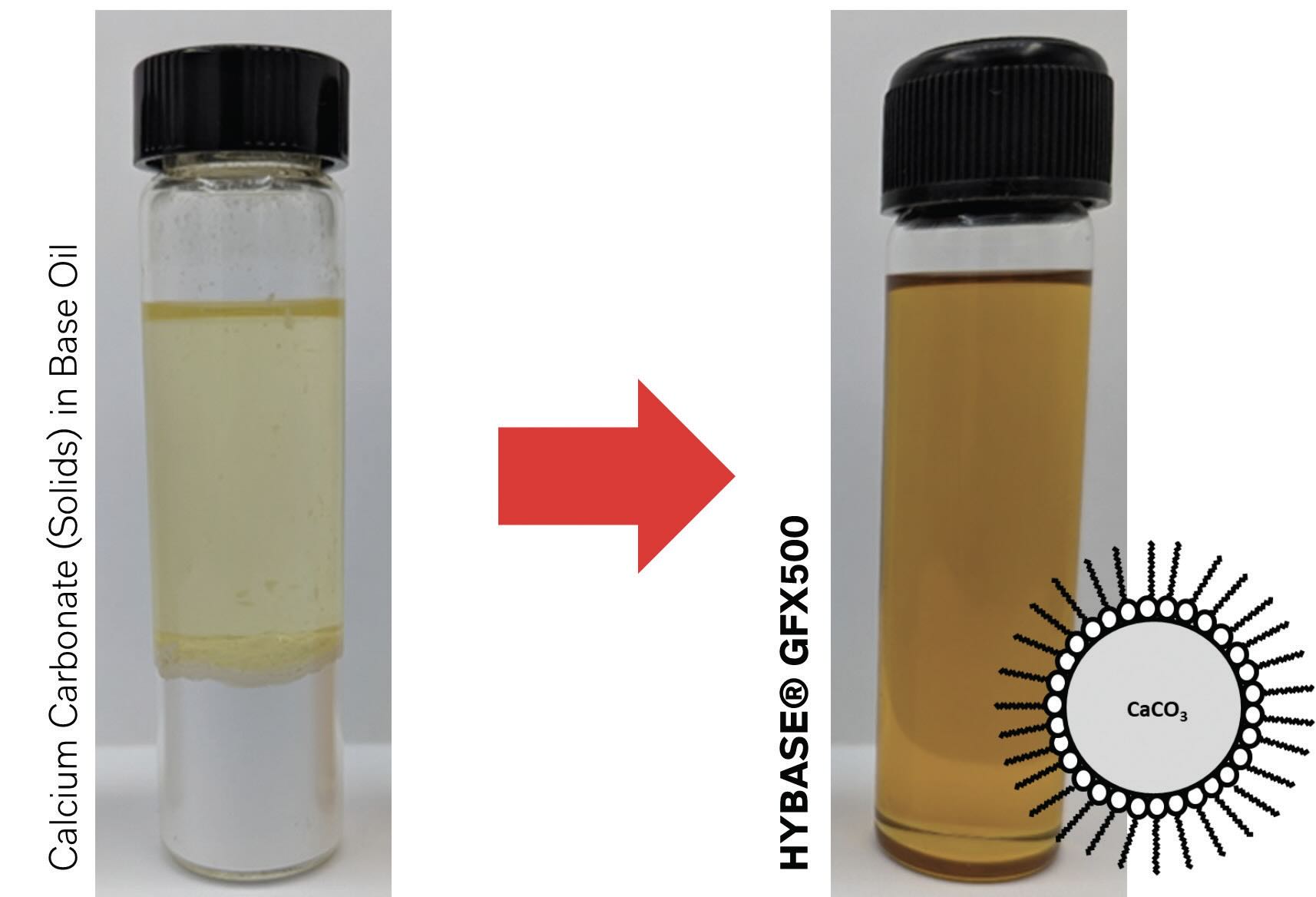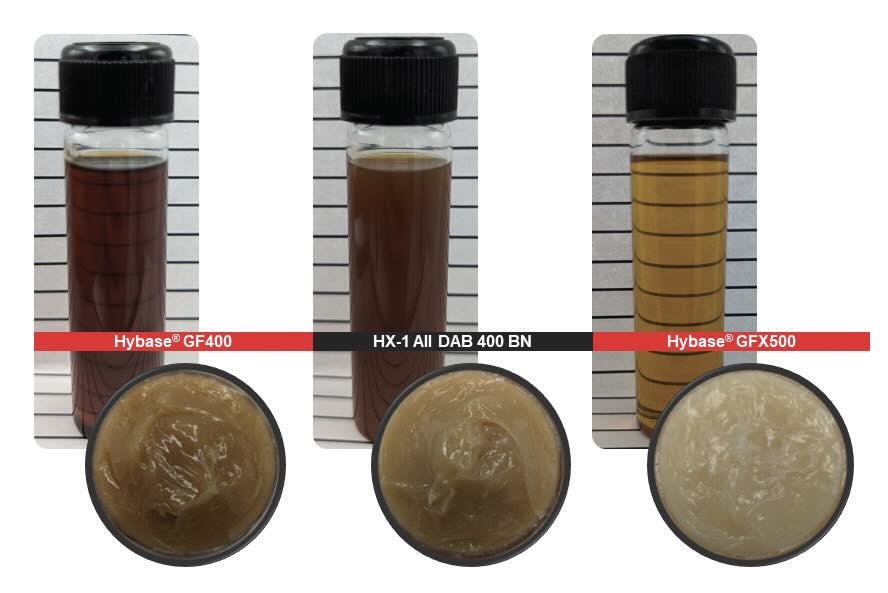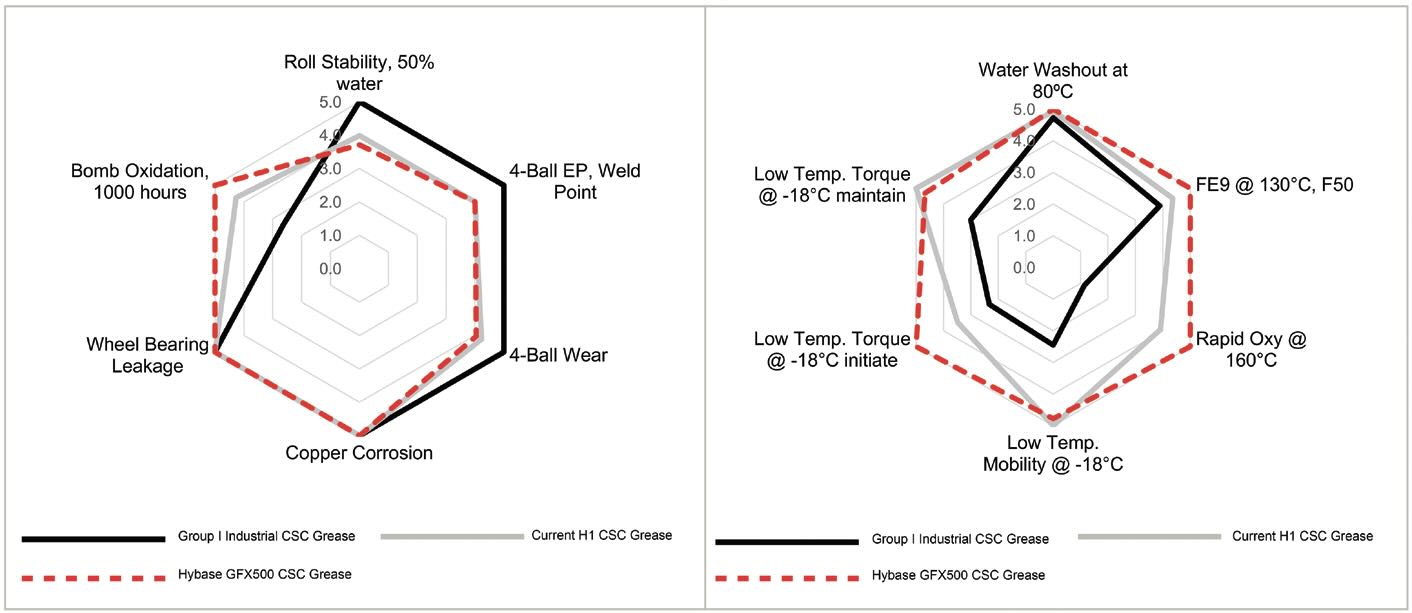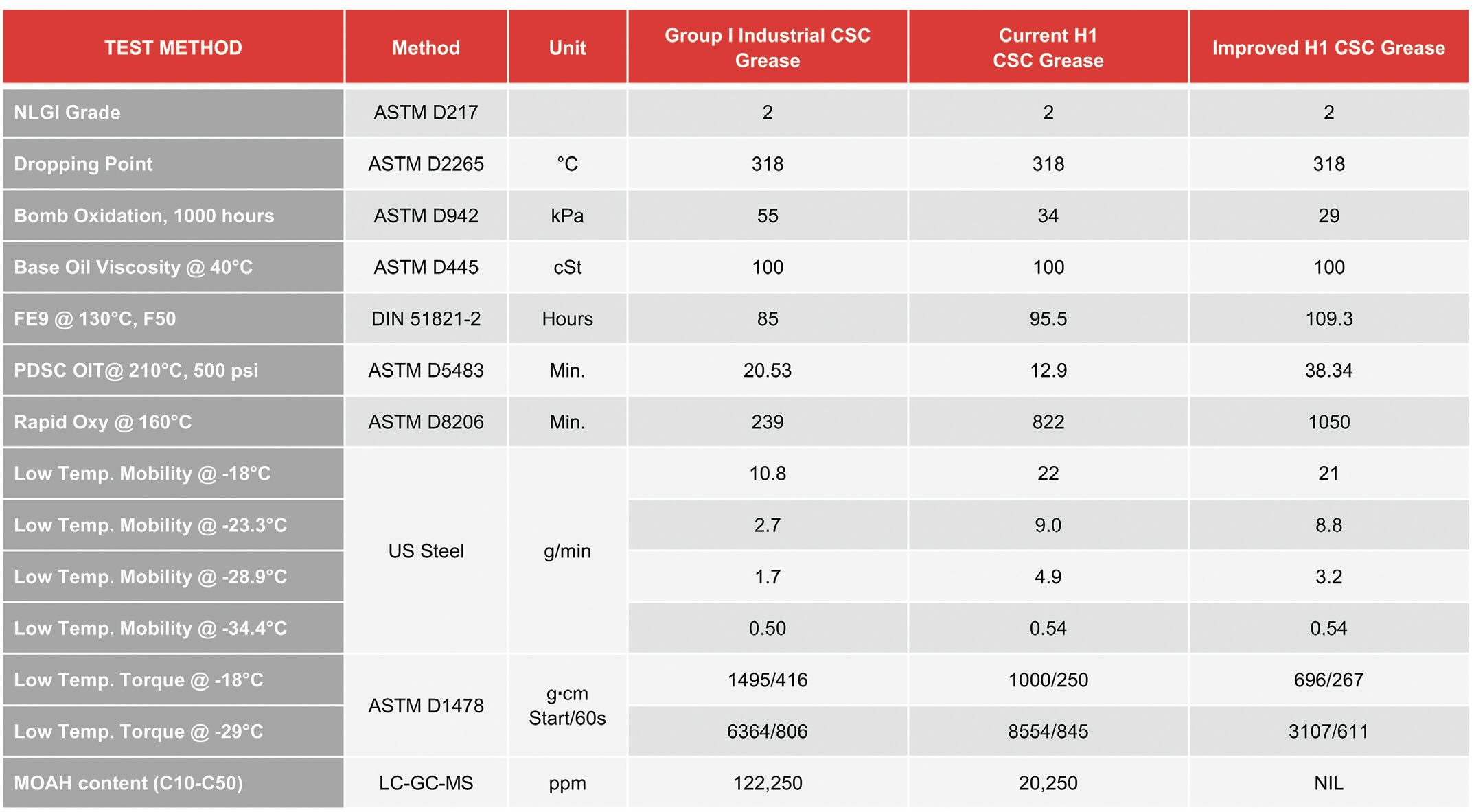LANXESS
HYBASE® GFX500: The Development of a Novel Incidental Food Contact Calcium Sulfonate
By Ross Dworet and Wayne Mackwood | TLT CMF Plus November 2024
Recognizing the continued widespread use of Food Grade (H1) Calcium Sulfonate Complex (CSC) greases in food processing applications, LANXESS sought to deconstruct a series of H1 CSC greases to identify the key components contributing to a finished CSC grease performance. The OBCS used to produce the grease was identified as the most critical component. The examination of its role in performance led to a complex study involving selections of raw materials, ratios of alkylates, and multi-step optimizing of process steps to produce a true first intention Overbased Calcium Sulfonate (OBCS) detergent for thickening an H1 CSC grease. The layers of complexity involved, as detailed below in Figure 1, produced a framework for LANXESS’ new HX-1 detergent, HYBASE® GFX500.
 Figure 1
Figure 1
Driven by increasing consumer awareness and regulatory pressure, formulators have become further limited in the use of traditional lubricant chemistries. In particular, the presence of Mineral Oil Aromatic Hydrocarbons, or MOAH, in food grade lubricants has been identified as potential risk. While only a potential risk at this time, manufacturers are exploring solutions to meet this and other evolving performance and safety requirements.
A Quality OBCS for Grease Feed
A CSC grease feed is an oil soluble overbased calcium sulfonate (OBCS) detergent produced from a neutral sulfonate that has been transformed by the addition of excess calcium hydroxide and carbon dioxide. Under controlled conditions, the overbasing of the neutral sulfonate can result in a base number (BN) between 50 and 500 mg KOH/g. The active portion of a neutral or overbased calcium sulfonate, commonly referred to as a soap on account of the polar head and nonpolar tail of the molecule, is produced from oil soluble alkylates that have been sulfonated then neutralized. This neutralized soap creates an inverse micelle with a calcium carbonate solids encapsulated by the calcium sulfonate molecules. The polar heads of the sulfonate molecules are arranged inward, and this is commonly referred to an inverse micelle. The base in the final OBCS product is primarily amorphous calcium carbonate. It is surprisingly soluble in the sulfonate mixture, and should result in a clear, transparent product without sediment. The inverse micelle structure can suspend more that 40% by weight of solids in a transparent, sediment-free liquid. In Figure 2, the visual representation of the amount of calcium carbonate solids can be found in a similar volume detergent with the HYBASE® GFX500 suspending 44 wt. % solids achieved with LANXESS’ proprietary process to result in stability, clarity, and low color.
 Figure 2
Figure 2
Developing HYBASE® GFX500: an HX-1 Grease Feed and Detergent
LANXESS initiated and completed a project to design a new overbased sulfonate using an optimized approach focused on achieving existing H1 compliant CSC grease performance coupled with nil MOAH. The components of an H1 CSC grease are limited by compliance with 21 CFR 178.3570. The accepted chemistries are limited by the approved list both defined by the CFR and the registering bodies. The limitations pose a significant challenge to achieving similar performance to the additives and formulated lubricants.
The key ingredient in a CSC grease is the OBCS. The selection and use of a quality sulfonate is an ideal starting point in the thickening of the grease. Transportation quality OBCS products are known for excellent performance, high clarity, lack of sediment, stable structure, and stable solubility.
In the development project, using clear desired targets, the alkylates selection and subsequent blends were evaluated through several iterations evaluating the following process and performance areas:
•
Sulfonation Process - Oleum versus Air/SO3 acid sulfonation
•
Neutral Calcium Sulfonate - neutralizing preformed sulfonic acids vs. in-situ sulfonation
•
Overbasing - testing the neutral’s ability to form stable micelles, free of crystalline carbonate
•
Filtration – ability to filter the product to remove excess and undesired solids
•
Appearance – transport quality clarity free of haze or sedimentation
•
CSC Grease Thickening – finished CSC grease performance vs. existing quality Industrial and H1 CSC Greases
The evaluation was conducted in two phases:
•
Phase I: Neutral and OBCS sulfonate and finished grease performance
•
Phase II: Operational feasibility focused on overbasing, processing/filtration, and final appearance.
After several iterations identifying optimal composition, process and finished grease performance, the result of this evaluation was a first intention grease feed with nil measured MOAH that produces a low color OBCS and subsequent low color CSC grease as seen in Figure 3.
 Figure 3: Detergent and manufactured CSC grease visual comparison
Figure 3: Detergent and manufactured CSC grease visual comparison
CSC grease performance with HYBASE® GFX500
HYBASE® GFX500, in testing to manufacture a grease, achieved the target of producing a CSC grease with performance equal or better than existing commercial food grade grease. The comparison study was conducted against an industrial grade CSC grease (“Group I Industrial CSC Grease”), a test H1 CSC grease with an existing HX-1 OBCS used as the thickener (“Current H1 CSC Grease”), and finally the same test H1 CSC grease produced with HYBASE® GFX500 (“HYBASE GFX500 CSC Grease”). In Figure 4, comparing the three greases using a normalized method showed that the HYBASE® GFX500 Improved H1 CSC Grease achieved similar performance targets against both the Current H1 CSC grease and the Group I Industrial CSC Grease.
 Figure 4
Figure 4
However, the HYBASE GFX500 CSC Grease had the best low temperature and oxidation performance in this study. Of note, both the H1 and GFX500 CSC Greases had excellent results in oxidation testing including the Bomb Oxidation, FE9, and Rapid Oxy data, Figure 4. The PDSC data, as seen in Table 1, showed a lower performance than either the Group I Industrial or GFX500 CSC greases. The HYBASE® GFX500 CSC Grease demonstrated an elevated performance in Low Temperature Torque leaving this as a further area to explore the extent of the formulation possibilities using HYBASE® GFX500 more optimally. The only grease to have a nil measurement of MOAH (C10-C50) was the HYBASE® GFX500 CSC Grease. The finished HYBASE® GFX500 was additionally evaluated by a third party confirming nil MOAH in the detergent itself.
 Table 1
Table 1
Summary
Calcium sulfonate complex greases continue to gain in popularity, both in industrial and food processing applications. To meet the evolving regulatory and user demands, LANXESS developed HYBASE® GFX500 as a next-generation OBCS for manufacturing high-performance food grade grease with the ability to formulate long-lasting and low color grease. This innovative grease feed offers superior clarity, synthetic composition, and enhanced performance characteristics with nil MOAH content to further ensure food safety.
References
Aiken, A. (2022, November).
The future of lithium greases. TLT: Tribology and Lubrication Technology.
Blau, P., Ed. (1992).
ASM Handbook: Volume 18 – Friction, Lubrication and Wear Technology. ASM International, pp. 100 – 102.
Gebarin, S. (2009, January).
The Basics of Food-Grade Lubricants. Machinery Lubrication.
Mackwood, W (2012, July).
The Next Generation Food Machinery Grease 10 Years On. NLGI Spokesman, Volume 76, Number 3, Jul-Aug 2012.
Mackwood, W., Muir, R. (1999, November).
Calcium Sulfonate Grease…One Decade Later. NLGI Spokesman, Volume 63, No. 5, 1999.
McGuire, N. (2020, February).
Lithium’s changing landscape. TLT: Tribology and Lubrication Technology.
McGuire, N. (2019, October).
Incidental contact lubricants for the food industry. TLT: Tribology and Lubrication Technology.
Moon, M. (2023, November).
Advances in H1 Food Grade Calcium Sulfonate Greases. TLT: Tribology and Lubrication Technology.
Shah, R., Tuszynski, W., Ed., (2022).
Lubricating Grease Guide. Seventh Edition, National Lubricating Grease Institute.